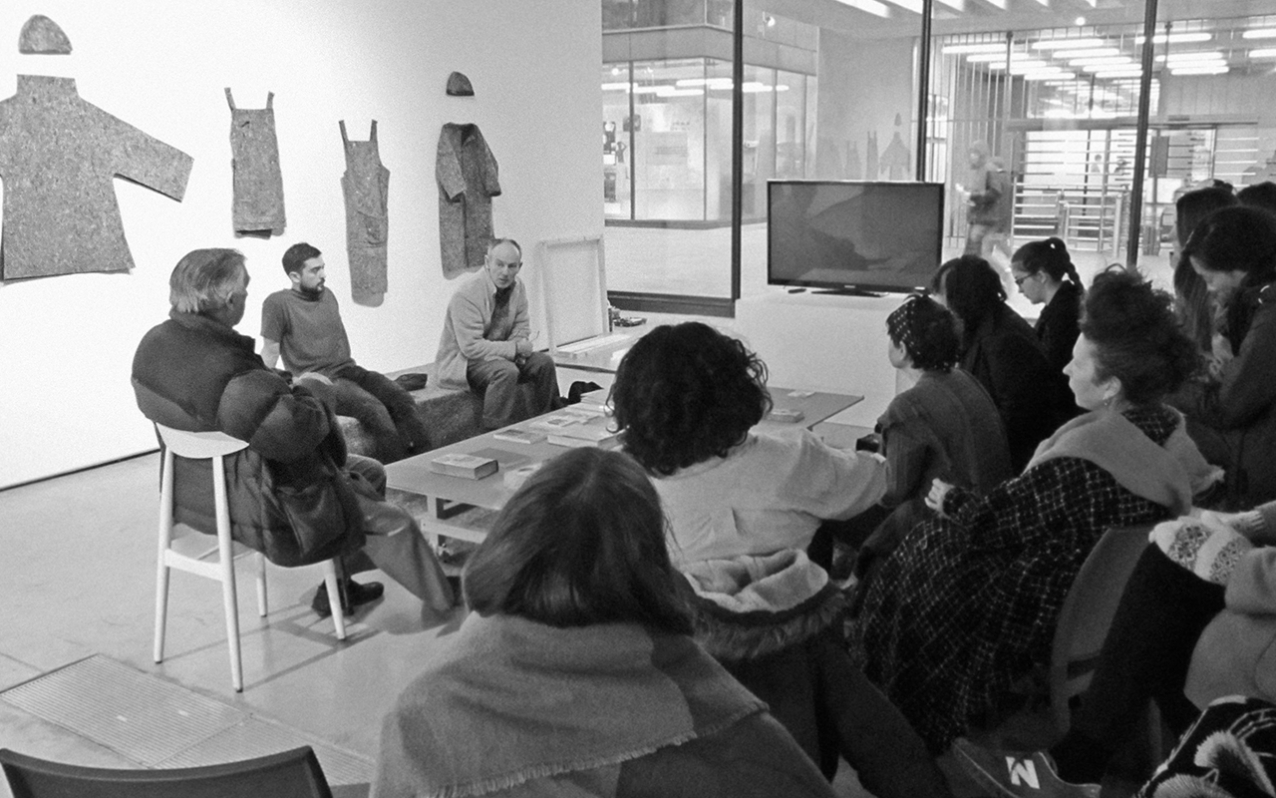Helsinki Design Residency’s designer 2016 is Luca Picardi

Communication designer Luca Picardi got selected to the Helsinki Design Residency 2016. His social projects combine communication, graphic design and anthropology.
Communication designer Luca Picardi got selected to the Helsinki Design Residency, held in Helsinki in September 2016. His social projects combine communication, graphic design and anthropology.
In January the British Council, Helsinki International Artist Programme (HIAP) and Helsinki Design Week were seeking applications from practitioners to participate in a residency programme in Helsinki in September 2016. This year’s designer-in-residence will be communication designer Luca Picardi. He will visit Helsinki in May during Aalto Festival and the actual residency programme takes place in September, at the same time as Helsinki Design Week 2016.
The residency is for UK-based practitioners, who work at the intersections of art, design and architecture, and who have an interest in critical investigations and interventions into what constitutes design innovation. For the first time, the applicant could also be a design curator or a design journalist. The residency was first established in 2012 during the World Design Capital programme in Helsinki.
The programme is organised in partnership with British Council, that creates links between the people of the UK and other countries with international institutions around the world, through a diverse range of projects in the fields of art, science and education. Other partners are Helsinki International Artist Programme HIAP and Aalto University School of Arts, Design and Architecture.
Helsinki Design Weekly congratulated Luca and asked about his expectations for Helsinki and the residency.
Hi Luca! Could you tell me a little about yourself and your background?
I’m a communication designer based in London. As I studied Anthropology at the undergraduate level, I’ve always tried to adopt the immersive techniques of ethnographic research across the different disciplines that I use to inform my projects, from photography to graphic design and urbanism. And I hope that this comes through in my work’s process and shape.
You have an interesting background with communications and graphic design and anthropology. Does it affect on your projects?
I always start a project by researching its social and cultural processes, then the design and the communication of the design hopefully becomes an organic extension of this. Placing myself in a position to listen to and observe the surroundings means that the response inevitably forms part of the context. I’m intrigued by how projects evolve and adapt, and I feel that it’s here, in the process, that the three fields really converge.
You will be spending two weeks in Helsinki in May and then whole September. Have you been in Helsinki before? What do you know about the city and what are your expectations?
No, I’ve never been to Helsinki, so I am really looking forward to exploring for the first time! The city has always appealed to me for its design scene and fresh Scandinavian aesthetic. I’m keen to see how design is used as a tool for social engagement by organisations such as Sitra, the Finnish Innovation Fund, and to see how this interacts with government policy, and can be applied to different issues.
Can you already tell something about your research plans during the residency?
Finland seems to be full of ambitious new innovative initiatives. Certainly the growth of “mobility on demand” to reduce car ownership is something I’m keen to find out more about. The potential environmental and social outcomes prompt a series of open-ended questions that could generate intriguing responses to the city. How are new interfaces between people, transport, and planning affecting citizenship? How are decision-making processes being perceived or altered? What is this doing to the relationship between periphery and city centre? These questions could be a good starting point to understand and explore Helskini through its design, people, and ideas.
